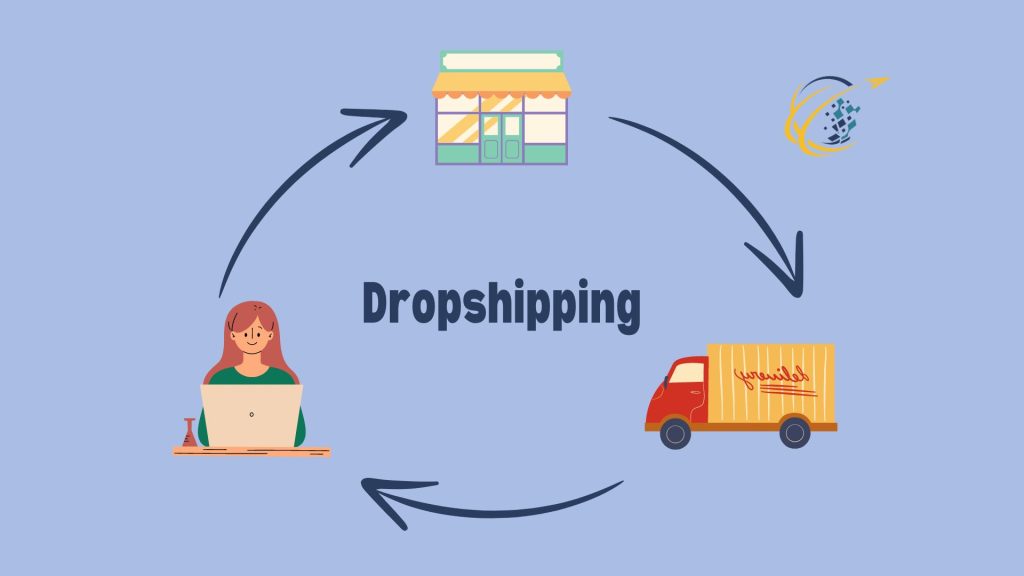In recent years, “Dropshipping Business Models” have surged in popularity, driven by the low startup costs and flexibility they offer to entrepreneurs. Unlike traditional retail models, where businesses must invest heavily in inventory and warehousing, dropshipping allows sellers to operate without holding any physical stock. Instead, the supplier sources the products and ships them directly to the customer. This business model is not only cost-effective but also adaptable, making it a compelling option for those looking to enter the e-commerce market.
How Dropshipping Business Models Work
The foundation of dropshipping business models lies in the outsourcing of order fulfillment. When a customer places an order on an online store, the seller forwards the order details to a third-party supplier. This supplier is responsible for picking, packing, and shipping the product directly to the customer. The seller, in turn, earns a profit by marking up the product price above the supplier’s cost. This model eliminates the need for inventory management and reduces overhead, allowing entrepreneurs to focus on marketing and customer service.
The global dropshipping market is projected to reach $500 billion by 2026, highlighting the growing interest in this business model. Dropshipping has become particularly appealing due to the increasing consumer preference for online shopping and the scalability it offers to businesses of all sizes.
Advantages
Dropshipping business models present several advantages that make them attractive to both new and seasoned entrepreneurs. One of the primary benefits is the low barrier to entry. Entrepreneurs can start a dropshipping business with minimal upfront investment, as there is no need to purchase inventory in bulk. This makes it possible to launch an online store with just a few hundred dollars, significantly lowering the financial risk.
Another advantage is the flexibility that dropshipping provides. Entrepreneurs can offer a wide range of products without worrying about storage or inventory management. This allows businesses to quickly adapt to changing market trends by adding or removing products from their catalog as needed. Additionally, the ability to test new products with little financial commitment makes dropshipping an ideal model for those looking to experiment with different niches.
Moreover, dropshipping is highly scalable. As the business grows, sellers can expand their product offerings and enter new markets without the limitations of physical inventory. This scalability is further enhanced by the availability of automation tools that streamline the process of managing orders, tracking inventory, and handling customer inquiries.
Challenges
While dropshipping business models offer numerous benefits, they also come with challenges that entrepreneurs must be prepared to address. One of the most significant challenges is the high level of competition. The low barrier to entry means that many entrepreneurs are drawn to dropshipping, leading to crowded markets in popular niches. To stand out, businesses need to focus on creating a strong brand and offering exceptional customer service.
Another challenge is the reliance on third-party suppliers for order fulfillment. While outsourcing fulfillment reduces overhead, it also means that sellers have little control over the quality of the products, packaging, or shipping times. Supplier errors, such as incorrect orders or delayed shipments, can negatively impact the customer experience and harm the business’s reputation.
Shipping times can also be a concern, particularly when working with international suppliers. Customers increasingly expect fast delivery, and long shipping times can lead to dissatisfaction and higher rates of cart abandonment. Entrepreneurs must carefully choose suppliers who can meet their delivery expectations or find ways to manage customer expectations regarding shipping times.
Dropshipping Business Models and Profitability
Profitability in dropshipping business models largely depends on the products chosen and the pricing strategy employed. Since suppliers often source dropshipping products and sell them to other retailers, price competition can be fierce. To maintain healthy profit margins, sellers must either find unique products that are not widely available or differentiate themselves through superior branding and customer service.
Marketing is another critical factor in the profitability of a dropshipping business. With the market becoming increasingly saturated, effective marketing strategies are essential for attracting customers and driving sales. Social media marketing, search engine optimization (SEO), and influencer partnerships are some of the most effective methods for promoting dropshipping products.
However, marketing can also be one of the most significant expenses for dropshipping businesses. Paid advertising, in particular, can quickly eat into profit margins if not managed carefully. Entrepreneurs need to develop a clear marketing plan and continuously monitor the performance of their campaigns to ensure they are getting a good return on investment.
The Future of Dropshipping Business Models
The future of dropshipping business models looks promising, with continued growth expected in the coming years. As e-commerce continues to expand globally, more consumers are turning to online shopping for convenience and variety. This trend will likely drive further adoption of dropshipping as a viable business model.
However, the success of dropshipping businesses will depend on their ability to adapt to changing consumer demands and market conditions. As competition intensifies, businesses that build strong brands, offer unique products, and provide exceptional customer service will be better positioned to thrive.
In conclusion, dropshipping business models offer a low-risk, high-flexibility opportunity for entrepreneurs to enter the e-commerce market. While there are challenges to overcome, such as competition and supplier reliance, the potential rewards make it a worthwhile venture for those willing to invest the time and effort required to succeed.


